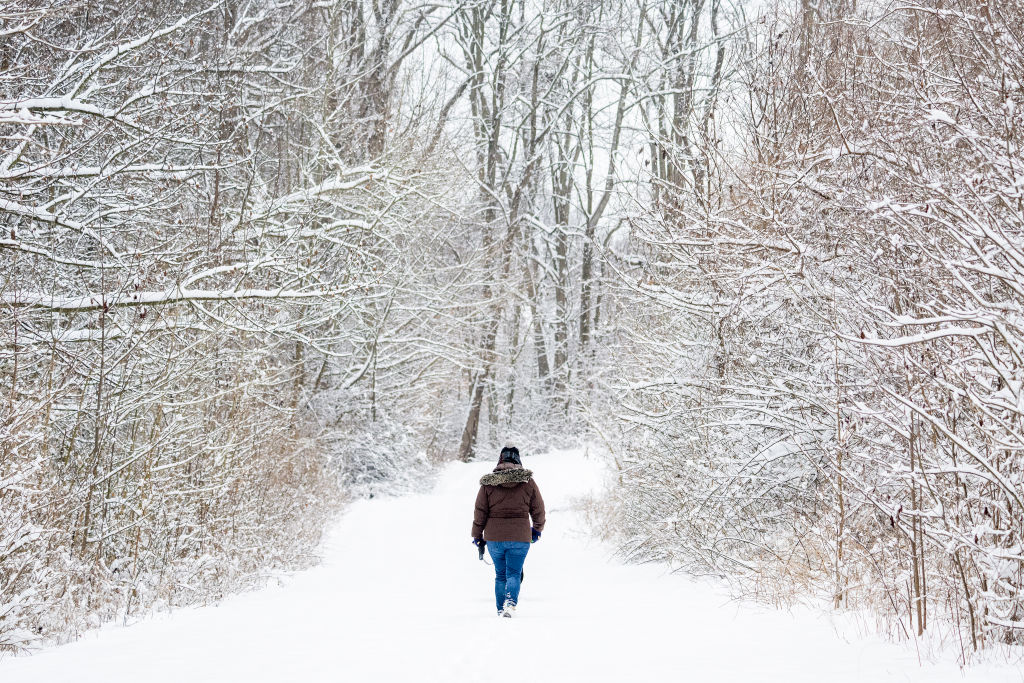Table of Contents

With much of the U.S. blanked in snow this week, many might be wondering what our warming climate means for the future of our winters.
The impacts of climate change might be far more noticeable during the summer—in 2024 the U.S. had its fourth hottest summer on record. But rising global temperatures are changing winters too. And people are noticing; 66% of Americans think global warming is affecting weather in the United States, according to a fall 2024 survey released this month by the Yale Program on Climate Change Communication.
[time-brightcove not-tgx=”true”]
“The existence of winter doesn’t disprove climate change,” says Stuart Evans, assistant professor of geography at the University of Buffalo. “Climate change is a long term trend that makes winter warmer, but it’s not erasing the occurrence of winter.”
Here’s how winters are impacted by climate change:
How will snow storms be impacted by climate change??
Most of the U.S. can expect to see more winter precipitation due to climate change, whether that be rain or snow, says Evans.
“A warmer atmosphere will carry more moisture,” he explains. This means that more of that moisture will be released as precipitation. A slightly warmer but still below freezing temperature can also produce more snow than during extreme cold, so some areas might see more snow as temperatures rise.
Some places will also see unique changes. For example, storm systems are shifting to different regions, says Chris Forest, professor of climate dynamics at Penn State University. “We’re seeing a lot more developments that are not occurring to our west, but they’re occurring to the Northwest,” he adds. As a result, he says, the rain that would previously drop over the west is now falling as snow over the Great Plains.
In some places—like Michigan or New York—“lake effect snow” might also become more common. The phenomenon occurs when warmer temperatures prevent the lakes from freezing over, causing the warmer water to evaporate into passing cold fronts and fall down as snow.
What parts of the country will be most affected?
Most of the country will be affected—in fact, many people already are. In the U.S., 283 million people—about 85% of the population—experienced at least one winter day with warm average temperatures last winter, according to Climate Central’s 2024 Climate Shift Index. The impact will look differently depending on where in the country you are. The west coast is seeing warmer, drier winters than 20 years ago, while the Mid-West has fewer days below freezing, says Forest.
“Twenty or 30 years ago, we wouldn’t have had as many of these contrasts of the warm West with the cold East,” says Forest.
One fall 2024 study in the journal npj Climate and Atmospheric Science found that overall winter precipitation and extreme weather events will increase across most of the country. The Northeast and Midwest are expected to see the greatest change, while the southern Great Plains—including Texas and Oklahoma—will see more frequent extreme dry events instead.
Will winters get shorter with climate change?
Yes. “Winters will get shorter everywhere, simply because there will be fewer days below freezing, or fewer days of frost, or whatever the metric of winter that you want to use,” says Evans, who notes that, though some places will warm faster than others, within the U.S. those differences will be modest.
For some, this might be a welcome change. “If you think that winter is cold and unpleasant and you like it when it’s warm, well then winter’s gonna get better,” says Evans. But for others dependent on snow or cold temperatures—whether for sports or agriculture—this change likely isn’t good news.
What are the consequences of warmer winters?
Warmer, shorter winters will have a noticeable impact.
A shorter winter could have big impacts on U.S. agriculture produced in the Midwest. “Snowfall is probably the most important thing, because it’s supplying water for the Great Plains during the winter time,” says Forest. “Midwestern states are primarily agriculture, and therefore the water that’s coming in is a necessary necessity to have in order to make sure that our crops are growing.”
Milder winters can also put crops at greater risk for pests and diseases that thrive at warmer temperatures. Stone fruits, walnuts, and almonds produced in California’s Central Valley are already at risk.
Plants and animals that have evolved to acclimatize to intense, cold periods might find it challenging to adapt. Polar bears might lose their habitats as snow melts earlier, while insects and animals might lay eggs earlier as they take seasonal cues from the warmer weather.
Meanwhile, infrastructure might not be prepared for heavy snowstorms—especially as storms spread to places that might not be accustomed to snow—as we saw earlier this year, when a snowstorm shut down the roads, highways, and bridges in Florida, as most cities lacked snowplows to remove the snow.
“We need to be ready,” says Forest.



